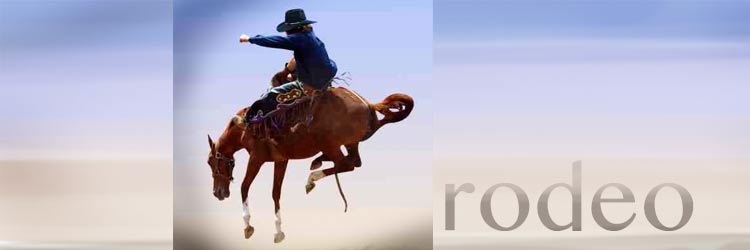Interesting Things About Rodeos

Although baseball and football are both considered by many Americans to be true American sports the actual fact of the matter is that both of those games find their history in other parts of the world. If you’re really keen on talking about a truly American sport then look no further than the rodeo. It is believed that in 1864 two groups of cowboys, one from one ranch and the other from a competing ranch, met in the town of Deer Trail, Colorado. Their goal; to settle a long-running argument about which group of cowboys could perform everyday ranching tasks the best. This fateful and humble gathering is considered to be the very first rodeo and marks this sport as one of the few, if not the only, sport that has ever been created from an industry (the cattle or beef industry).
At any modern professional rodeo today you’ll find cowboys that, while far removed from these two original two groups, bring the ideals and values that they had with them to the center ring, along with a very large dash of showmanship. While early Cowboys traveled to rodeos on horseback and with covered wagons today’s modern, professional cowboy spends most of their time in custom-made rigs traveling the country from town to town and rodeo to rodeo. Some of the best send their horses and equipment by road and meet them at their destination by commercial or charter plane.
No matter how they get to the rodeo however the Cowboys that compete are still judged on their skills with a rope and also their abilities in several other areas including riding large, dangerous steers. Today’s modern cowboy is also skilled at the business of marketing as well as riding, wrestling and roping, mostly due to the fact that they are competing for very large amounts of prize money. Indeed, as the popularity of rodeo grows stronger around the country and around the world, the prize money gets bigger and bigger. Even though they compete for the same prizes and paychecks however there is still a code of honor among Cowboys that dictates that they help their fellow Cowboys and competitors.
Unlike many other professional sports rodeo is one where riders and performers take their wives and even their children along whenever it’s possible. In many ways this is actually a necessity because, in order to be able to compete in the Wrangler Nationals Finals Rodeo for example, a professional rodeo cowboy will spend more than 200 days on the road per year. It’s for this reason, along with quite a few others, that rodeo is one of the few sports that is a family-oriented, sees families working together and is passed down from father to son (and, to a lesser extent, mother to daughter).
In 1936 the predecessor to the Professional Rodeo Cowboys Association (PRCA) was formed. Interestingly, it was actually forced into creation when rodeo promoter W.T. Johnson refused to add the entry fees that his competing Cowboys had paid to the rodeo’s total purse (prize money). He was hosting a rodeo at the Boston Gardens and, due to his stubbornness and greed, a large group of Cowboys walked out on the rodeo in protest. Johnson eventually gave in to their demands and the unhappy cowboys formed the Cowboys Turtle Association, a name that was chosen because of the fact that they weren’t afraid to ‘stick their necks out’ to have their demands met (even though they were a little slow to do it). This name was changed in 1945 to the Rodeo Cowboys Association and again in 1975 when it became the PRCA.
To be completely fair the ‘vaqueros’ (literally ‘cow men’ in Spanish) that came over from Spain in the 1700’s and helped show the Mexicans working in the west about riding should get some credit for their part in rodeo’s history. The Mexicans that they taught in turn helped build America’s flourishing cattle market and thus should be given a bit of credit for the horsemanship and traditions that they introduced to the American west. The fact is, most Spanish Cowboys were the sons of noblemen in Spain and were highly trained horsemen. Indeed, horsemanship has been practiced in Spain literally for centuries. Many of the celebrated skills that professional Rodeo cowboys now put on display were taken from the Spanish and, when the west was being used to raise cattle after the Civil War, the ranks of Cowboys grew immensely and they put the horse skills that the Spanish had introduced to good work.


